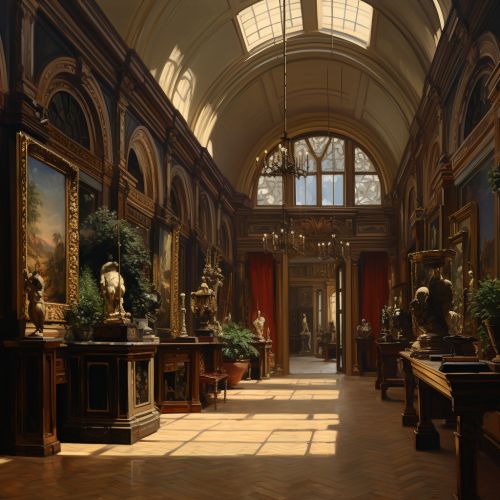John Singer Sargent
Early Life
John Singer Sargent was born on January 12, 1856, in Florence, Italy. He was the son of FitzWilliam Sargent, an American eye surgeon, and Mary Newbold Singer. His parents were American expatriates who lived a nomadic life in Europe, moving from city to city. This lifestyle exposed Sargent to a variety of cultures and artistic styles at a young age.


Artistic Training
Sargent began his artistic training under the guidance of a German landscape painter, Carl Welsch. He later enrolled at the École des Beaux-Arts, one of the most prestigious art schools in France. There, he studied under the tutelage of Carolus-Duran, a French portrait painter known for his innovative teaching methods. Carolus-Duran emphasized the importance of painting directly onto the canvas without any preliminary sketches, a technique that would greatly influence Sargent's style.
Career
Sargent's career took off after his painting, "Portrait of Madame X," was exhibited at the Paris Salon in 1884. Despite the initial scandal it caused due to its provocative nature, the painting eventually gained recognition for its technical brilliance and innovative composition. Sargent moved to London in 1886, where he established himself as a sought-after portrait painter among the British elite.
His works are characterized by their remarkable realism, attention to detail, and ability to capture the personality and mood of his subjects. Some of his most notable works include "Carnation, Lily, Lily, Rose," "Lady Agnew of Lochnaw," and "The Daughters of Edward Darley Boit."
Style and Technique
Sargent is often associated with the Impressionist movement, although his style is more accurately described as a blend of Realism and Impressionism. He was known for his ability to capture the fleeting effects of light and color, a characteristic feature of Impressionist art. However, unlike many Impressionists, Sargent maintained a strong focus on the realistic depiction of his subjects.
His technique was greatly influenced by his early training under Carolus-Duran, who encouraged painting directly onto the canvas without any preliminary sketches. This approach allowed Sargent to capture the immediacy and spontaneity of his observations, resulting in paintings that are vibrant and full of life.
Legacy
Sargent's influence on the art world is undeniable. His innovative techniques and unique style have inspired countless artists, and his works continue to be celebrated for their technical brilliance and emotional depth. Today, Sargent's paintings can be found in many prestigious museums around the world, including the Metropolitan Museum of Art in New York and the Tate Britain in London.


